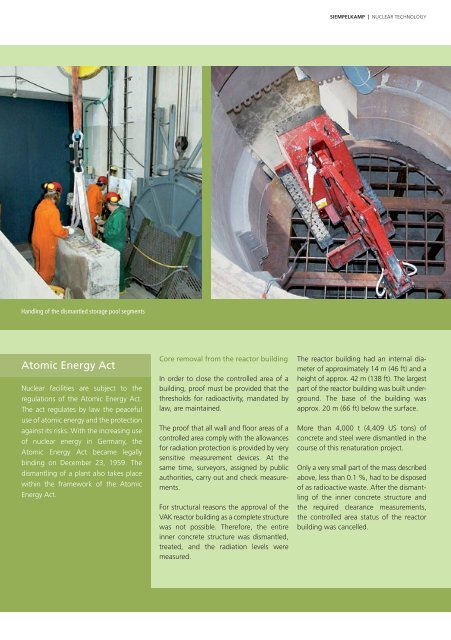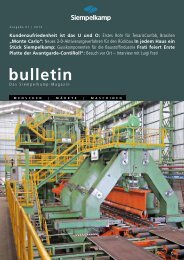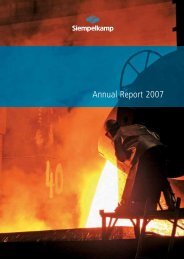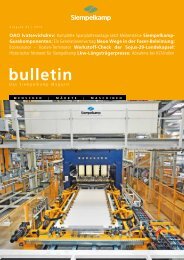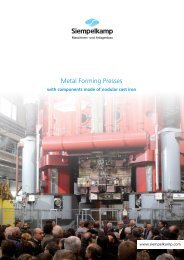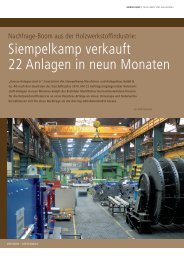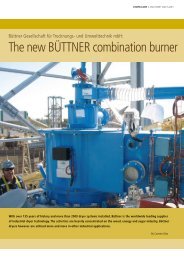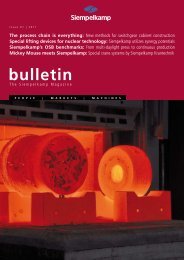Bulletin 2/2010 - Siempelkamp NIS
Bulletin 2/2010 - Siempelkamp NIS
Bulletin 2/2010 - Siempelkamp NIS
You also want an ePaper? Increase the reach of your titles
YUMPU automatically turns print PDFs into web optimized ePapers that Google loves.
Handling of the dismantled storage pool segments<br />
Atomic Energy Act<br />
Nuclear facilities are subject to the<br />
regulations of the Atomic Energy Act.<br />
The act regulates by law the peaceful<br />
use of atomic energy and the pro tection<br />
against its risks. With the increasing use<br />
of nuclear energy in Germany, the<br />
Atomic Energy Act became legally<br />
binding on December 23, 1959. The<br />
dismantling of a plant also takes place<br />
within the framework of the Atomic<br />
Energy Act.<br />
Core removal from the reactor building<br />
In order to close the controlled area of a<br />
building, proof must be provided that the<br />
thresholds for radioactivity, mandated by<br />
law, are maintained.<br />
The proof that all wall and fl oor areas of a<br />
controlled area comply with the allowances<br />
for radiation protection is provided by very<br />
sensitive measurement devices. At the<br />
same time, surveyors, assigned by public<br />
authorities, carry out and check measurements.<br />
For structural reasons the approval of the<br />
VAK reactor building as a complete structure<br />
was not possible. Therefore, the entire<br />
inner concrete structure was dismantled,<br />
treated, and the radiation levels were<br />
measured.<br />
SIEMPELKAMP | NUCLEAR TECHNOLOGY<br />
The reactor building had an internal diameter<br />
of approximately 14 m (46 ft) and a<br />
height of approx. 42 m (138 ft). The largest<br />
part of the reactor building was built underground.<br />
The base of the building was<br />
approx. 20 m (66 ft) below the surface.<br />
More than 4,000 t (4,409 US tons) of<br />
concrete and steel were dismantled in the<br />
course of this renaturation project.<br />
Only a very small part of the mass described<br />
above, less than 0.1 %, had to be disposed<br />
of as radioactive waste. After the dismantling<br />
of the inner concrete structure and<br />
the required clearance measurements,<br />
the controlled area status of the reactor<br />
building was cancelled.


